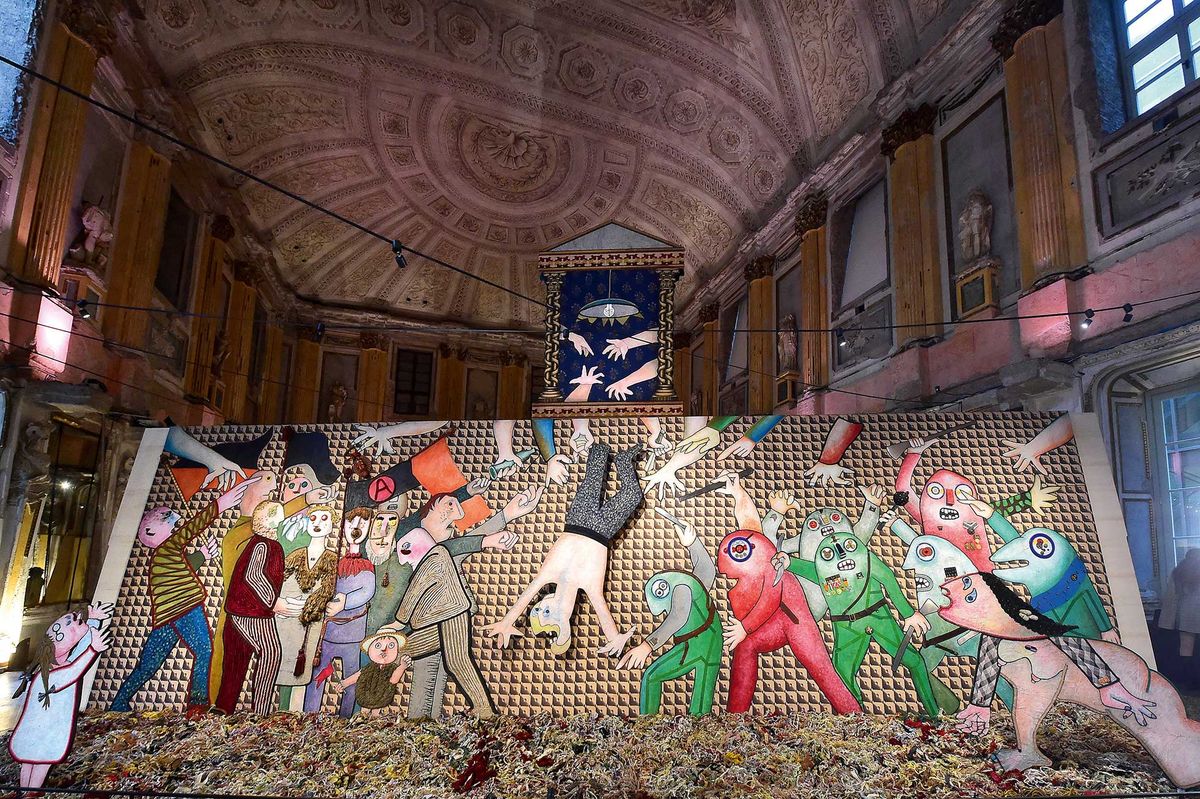The city council of Milan has sparked outrage by placing a 3m x 12m work by the avant-garde artist Enrico Baj—depicting the suspicious death of an anarchist rail worker in police custody in 1969—on permanent display in a small room at the Museo del Novecento. Critics accuse the council of lacking the courage to fully confront one of the city’s most divisive post-war political episodes.
Giuseppe Pinelli was detained by police for questioning over a bomb attack on a Milan bank in Piazza Fontana that killed 17 people. Three days later, he fell to his death from a fourth-floor window of the police station where he was being held. Following an investigation, the prosecutor Gerardo D’Ambrosio later ruled that the anarchist had fainted and lost his balance. However, far-left groups maintained that he was pushed by Luigi Calabresi, one of three officers interrogating him.
Inspired by Guernica
Baj’s artwork, I Funerali dell’anarchico Pinelli (1972), is composed of wooden silhouettes mounted on a board. It depicts Pinelli falling headfirst, with onlookers—including his wife and two daughters—on one side and demonic police officers wielding daggers on the other. The piece, often said to have been inspired in part by Picasso’s famous Guernica (1937), also features a separate window framing four outstretched hands, which has sometimes been positioned above the main collage.
Tommaso Gorini, a city councillor from the Europa Verde party, accused his colleagues of ‘mutilating’ the work
Baj originally gave the work to Licia Pinelli, Giuseppe’s widow, who later sold it to the Milanese gallerist Giorgio Marconi. Baj had intended the piece to be displayed in the Hall of Caryatids, a grand 600 sq. m hall in the city’s Palazzo Reale, but its exhibition was cancelled on the day of its scheduled inauguration, 17 May 1972, when Calabresi, the police officer, was assassinated outside his home by far-left militants.
Instead, the work went on temporary display worldwide—including in Stockholm, Geneva and Miami—before finally being shown in the Hall of Caryatids in 2012. It was donated to Milan’s city council in 2017.
Initially, the council planned to house the work in Palazzo Citterio, a 20th-century art space managed by the Pinacoteca di Brera that opened in December. However, on 20 February it was unveiled instead in a small fourth-floor room at the Museo del Novecento, as part of a permanent exhibit on Milanese art from the 1960s to the 1990s.
Councillors ‘lack courage’
Claudia Pinelli, Giuseppe’s daughter, criticised the placement, saying the cramped space diminishes the work’s impact. She also lamented that the separate window piece had to be displayed at the entrance because of the room’s low ceiling.
“One hoped after many years of waiting that it would be in a more visible space,” she tells The Art Newspaper. She also suggested that councillors had lacked the courage to properly confront a painful chapter in Milan’s history.
Criticism came from other quarters as well. In a Facebook post, the former Milan culture chief Rossella Traversa called the exhibition space “totally inadequate”, “sloppy” and “vulgar”.
Meanwhile, Tommaso Gorini, a city councillor from Europa Verde party, accused his colleagues of “mutilating” the work, during a debate at city hall, the news website Milano Today reports.
However, Luca Costamagna, a councillor from the leftist Democratic Party, defended the decision. “The news, instead of being that this work is finally back on display… is that it has been mutilated,” he reportedly said. He claimed that Baj’s family had been consulted about its placement.


